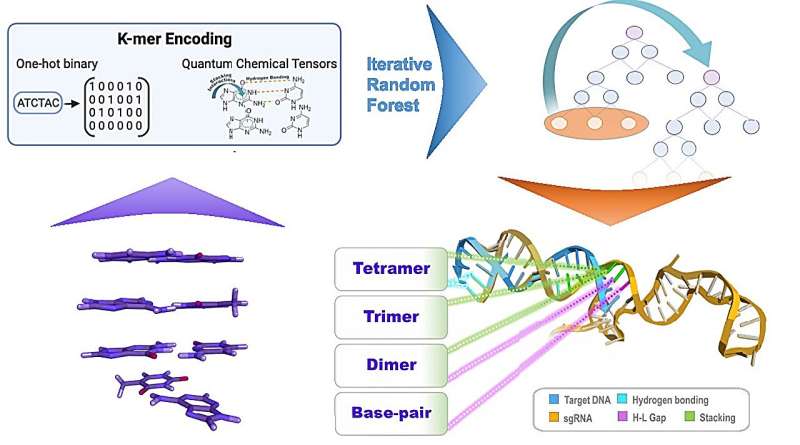
In a groundbreaking effort to optimize CRISPR Cas9 genome editing tools, scientists at Oak Ridge National Laboratory (ORNL) have harnessed the power of quantum biology, artificial intelligence (AI), and bioengineering. Their focus has been on enhancing the performance of CRISPR on microbes, which hold the potential for producing renewable fuels and chemicals.
CRISPR Cas9, a renowned bioengineering instrument, has typically been less efficient when applied to microbes due to the reliance on models built from limited species data. “Many CRISPR tools have been developed for mammalian cells, fruit flies, or other model species. Few have been geared towards microbes where the chromosomal structures and sizes are very different,” said Carrie Eckert, leader of the Synthetic Biology group at ORNL. This observation led the team to seek a deeper understanding of cellular processes at the quantum level to improve guide RNA design, leading to further advancements in quantum biology.
The ORNL scientists developed an explainable AI model called an iterative random forest, which was trained on a vast dataset of guide RNAs focusing on quantum chemical properties. This model has proven a significant step forward, identifying crucial nucleotide features to enhance the selection of effective guide RNAs for CRISPR technology. “The model helped us identify clues about the molecular mechanisms that underpin the efficiency of our guide RNAs,” shared computational systems biologist Erica Prates.
This research, extending beyond the microbial world, has promising implications for drug development and other areas where CRISPR technology could be applied. “This paper even has implications across the human scale,” Eckert mentioned, highlighting the importance of accurate models for targeting specific genomic regions.
By integrating quantum biology into their models, the ORNL team has opened a new frontier for CRISPR Cas9 enhancements across various species. Their work contributes to a broader understanding of functional genomics, linking genes to physical traits and propelling the efficiency of genome editing tools. “We’re greatly improving our predictions of guide RNA with this research,” Eckert concluded, underscoring the ambition to refine these tools for precision and rapidity in scientific research.
Kenna Hughes-Castleberry is a staff writer at Inside Quantum Technology and the Science Communicator at JILA (a partnership between the University of Colorado Boulder and NIST). Her writing beats include deep tech, quantum computing, and AI. Her work has been featured in Scientific American, Discover Magazine, New Scientist, Ars Technica, and more.
- SEO Powered Content & PR Distribution. Get Amplified Today.
- PlatoData.Network Vertical Generative Ai. Empower Yourself. Access Here.
- PlatoAiStream. Web3 Intelligence. Knowledge Amplified. Access Here.
- PlatoESG. Carbon, CleanTech, Energy, Environment, Solar, Waste Management. Access Here.
- PlatoHealth. Biotech and Clinical Trials Intelligence. Access Here.
- Source: https://www.insidequantumtechnology.com/news-archive/scientists-leverage-ai-and-quantum-biology-to-improve-genome-editing-tool/



